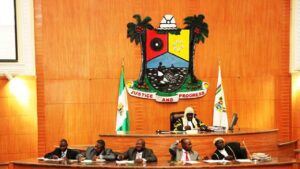
Toyota Mirai adds Toyota audio multimedia for 2023
With an advanced powertrain, striking coupe-like design and a luxury interior that’s loaded with technology, the 2023 Toyota Mirai brings the future to drivers today. Now in its second-generation, the Mirai brings a stunning design, dynamic driving performance and an EPA estimated zero emission range of 402 miles range on the Mirai XLE grade.
The 2023 Mirai Limited grade also brings the latest in advanced driver assistance technology with Toyota Teammate™, a suite of driver-assistance technologies that can be purchased as an upgrade designed to provide increased confidence for your drive.
Toyota Teammate provides two functions: Advanced Drive and Advanced Park. It uses an intelligent system of cameras, radar and LiDAR, which work together in partnership to help achieve convenient and efficient mobility.
Advanced Drive can support drivers on certain limited-access highways by detecting driving conditions and executing acceleration, braking and steering commands under active supervision of the driver. Hands-free driving is also possible under certain conditions with eyes-on-the-road operation confirmed by the driver monitor system. Advanced Park assists the operations necessary for hands-free parking by automatically controlling steering, acceleration, braking and gear changes when parallel parking or backing into a parking space.
In essence, the Mirai is a “plug-less” electric vehicle. There’s no need to charge a big battery, which can take several hours in a BEV even with fast charging. Instead, the FCEV driver simply fills the tank with hydrogen, just as millions of drivers do every day with gas vehicles. With an FCEV, the fuel is non-toxic, compressed hydrogen gas rather than liquid gasoline.
An FCEV generates its own electricity onboard from hydrogen, with water as the only emission. A fuel cell system combines stored hydrogen with oxygen from the air, and a chemical reaction that produces electric current, and water, which drops out of a hidden vent pipe beneath the car.
Electricity generated by the Mirai’s fuel cell and the regenerative braking system is stored in a lithium-ion battery. Pressing the accelerator pedal yields immediate flow of electric power from the fuel cell and/or battery to the rear-mounted AC synchronous electric motor, which drives the rear wheels. An electric air compressor pressurizes the intake air, and a water-cooled intercooler reduces the temperature of the compressed air before it enters the fuel cell stack. A water-cooled oil cooler integrated with the air compressor helps maximize efficiency.
The intake system is designed to mitigate noise, which is virtually unnoticeable to occupants. By necessity, the intake air for the fuel cell must be purified. And so, an electrostatic air cleaner element captures ultra-fine particles (Particulate Matter 2.5), and a charcoal filter removes chemical substances.
All new Toyota Mirai will include up to $15,000 of complimentary hydrogen with a purchase or lease.
Fuel cell technology pre-dates the automobile by half a century. In 1838, a Welsh physicist combined hydrogen and oxygen in the presence of an electrolyte and produced an electric current, though not enough to be useful. By the 1960s, the technology was being used in America’s Gemini and Apollo spacecraft, where it provided crews with both electricity and water from stored hydrogen and oxygen.
Fuel cells had been studied for the automotive sector, but the technology only recently became practical and cost-effective. Toyota began its fuel cell development around the same time as the original Prius — nearly 25 years ago, and the Mirai shares technology from the company’s hybrid program.
Toyota developed the solid-polymer electrolyte fuel cells used in the first- and second-generation Mirai models. To help foster FCEV proliferation, the company has released over 5,000 of its patents, royalty-free.
It is a scalable technology that can be made small enough to power a phone or large enough to power a building, or anything in between. For example, Toyota installed fuel cell powertrains in a fleet of class-8 semi-trucks that are rated for a maximum 80,000-pound load. These big rigs have been used for moving freight in and around the Ports of Los Angeles and Long Beach, California.



